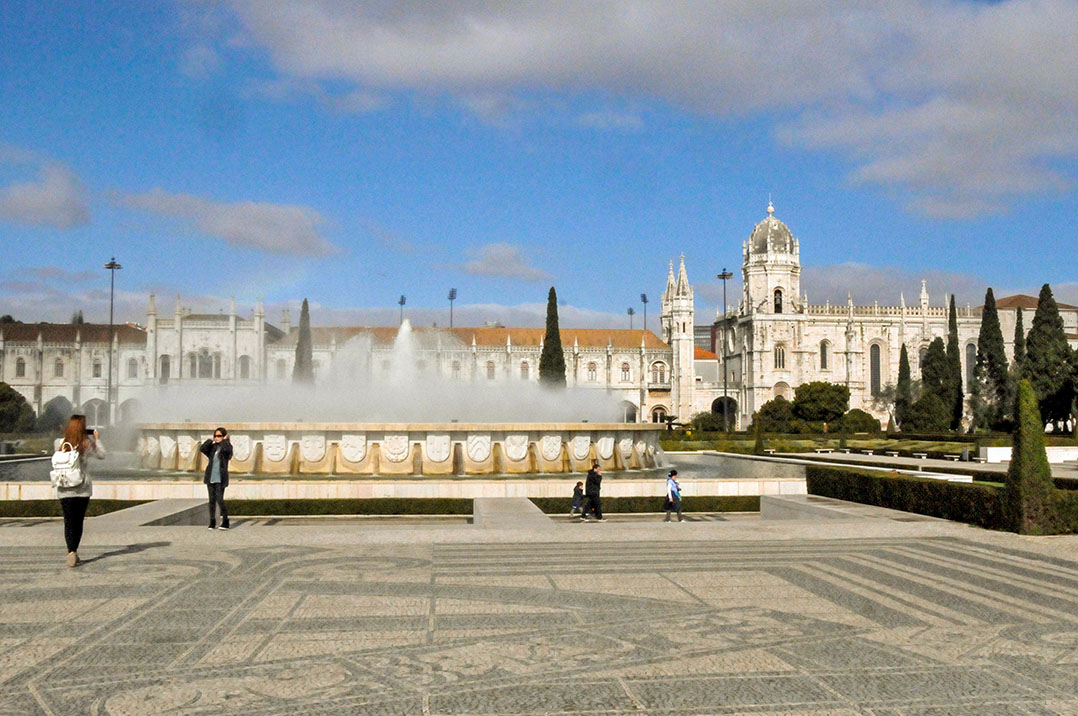Belém, named for Bethlehem, is an area of southwest Lisbon along the Tagus River. By the 15th century, sailors were leaving from the Belém port to explore the western coast of Africa and beyond. The Order of Christ provided assistance for arriving and departing sailors. In about 1460, Henry the Navigator, the order’s governor, built the Church of St. Mary of Belém near the port. In 1496, Portuguese King Manuel I petitioned the pope to convert the deteriorating church into a monastery, where monks of the Order of St. Jerome could pray for his eternal soul and provide spiritual assistance to the explorers who were traveling further and further toward Asia. In 1498, Vasco de Gama reached India, the first European to reach Asia entirely by sea.
Portugal soon established a lucrative sea trade with Africa and the Orient, bringing enormous wealth to Portugal. As a result, King Manual greatly expanded his vision of the Jerónimos Monastery, employing architects to design a massive complex in the ornate style that eventually became known as “Manueline.” Construction of the monastery began Jan. 6, 1501, financed with a 5 percent tax on goods arriving at the Belém port from Africa and Asia. When completed about 100 years later, the monastery had become one of the most important buildings in Portugal and the burial place of Portuguese royalty.
The Jerónimos Monastery survived the 1755 earthquake that destroyed much of Lisbon, but was secularized by government decree in 1833 and is now operated by a private charitable organization. In 1983, the Jerónimos Monastery and the nearby Tower of Belém were named UNESCO World Heritage sites and are now the two most visited sites in Lisbon. The monastery also hosts important international events, including the signing of the Treaty of Lisbon in 2007 reforming the European Union.



